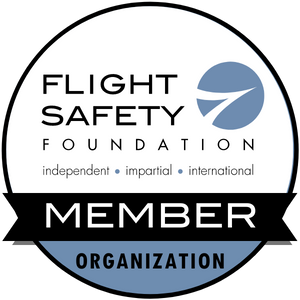Five ways latent errors in your MELs can come back to bite you
The story is familiar — a business jet operator has just received a new aircraft joining its fleet and there’s a last minute frenzy to get the Minimum Equipment List (MEL) created after receiving details of the aircraft’s configuration. You, or your external consultant, completes the MEL and — after a cursory review — you submit it to get approved. Job done, right? Not quite, as you know. MELs are long documents — 1,000 pages long. Did you or your team actually review the full document thoroughly for correctness?
Unsurprisingly, most MELs contain some form of error as they are manually created, and contain a large amount of safety-critical data. This can lead to latent errors in the MEL. This may not immediately be an issue — your regulator might not notice — but they can and do cause significant operational and safety risks. Consider some common examples below.
Incorrect Transcription of MEL Time Intervals
One letter can make a big difference. The experts at TrustFlight have witnessed countless examples of intervals incorrectly copied over from the MMEL in an operator’s MEL. It’s an easy mistake to make — what should have been a “CAT D” item ended up being “CAT C”, for example. Often this won’t be noticed until a deferral is required. Then, a fix that your team expected 120 days to address, is reduced to only ten days. Furthermore, what is written in an operator’s MEL is gospel, with no dispensation to remedy the error. The result could include canceled flights, or the cost of calling an AOG engineer out to fix an issue that could’ve been dealt with at a scheduled check.
Time lag for revisions to the latest MMEL or DDG/MOPP
A new MMEL revision has come out (again!) and you’ve been slow to revise your MEL. Most aviation regulatory authorities provide an operator with a timeline to incorporate the changes but often these deadlines will be inadvertently missed. Accordingly, your aircraft is subject to a ramp check and the out-of-date MEL is discovered. The best case scenario is a finding and the worst case is a grounding — especially if there are deferrals no longer available in the new MMEL. Even if you’re compliant, 90 days can be a long time to incorporate any new deferrals available in the new MMEL, so the aim should be to revise your MEL as soon as possible to avoid disruption.
Missing Items in the MEL
An MEL might be written without knowledge of the complete aircraft configuration and installed equipment. Some items may be omitted or left to be checked but subsequently forgotten. While not a safety risk, this can still be a big frustration when a fault occurs and the crew or engineer can’t find the an expected item in the MEL. The fault has to be fixed before you can fly again and the result is yet another AOG engineer charge.
Operational Limitation Errors
Similar to Maintenance Intervals, another common error in MELs occurs when limitations are incorrectly copied from source materials during creation. For example, an altitude restriction of 25,000 feet in the MMEL can easily be inadvertently transposed as 35,000 feet in the MEL. This becomes a significant safety risk as your crew are now effectively test pilots, operating outside the limitations of your aircraft’s type certificate. This is not ideal, especially if they don’t realize it at the time.
Poorly Written or Vague Procedures
Procedures are written or defined by the operator. However, in a rush to get an MEL created, several of these procedures might be noted as “as required by regulations” or “operator to establish procedure.. This approach is acceptable until the crew need to consult the MEL on a quick turn, and can’t work out if they can actually dispatch as the procedures and limitations aren’t clear. Our experts have encountered scenarios of crew abandoning the trip unnecessarily or departing when they shouldn’t have — including diversions and returns to base after they realize the mistake.
Most of these latent errors are easily avoidable. Automated systems are available that enable operators to quickly create and revise MELs with minimal manual input, greatly reducing the risk of human error. An operator may feel that they have a good MEL process, but should be mindful of the impact of quality issues in the MEL can have on their operations.
Let's get started
Talk to our sales team to find out how you can transform your operation with our products and services.

